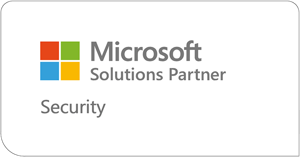
Cybersecurity
 Cybersecurity risk is business risk. We’ll help you empower the right people and technology to protect your data.
Cybersecurity risk is business risk. We’ll help you empower the right people and technology to protect your data.
Over 50% of companies have experienced one or more cyberattacks in the last 12 months. On average, it takes most companies at least six months to detect a data breach, regardless of its size.
Cybersecurity involves more than protecting your systems and data – it means safeguarding your business’s reputation. Organizations that are prepared for an incident can recover quicker and save an average of 38% on the cost of the breach.
Our team will help you understand your risks and prepare appropriate prevention tactics for each. This includes employee education, establishing budgets, and implementing the right technology for detection and resolution.
What We Offer
Cybersecurity Advisory
Threat Management
Virtual Chief Information Security Officer (vCISO) Services
Cybersecurity Risk Checklist

Measure your organization’s security posture with this comprehensive checklist.
Measure Your RiskCyberattacks are not a matter of if, but when. Is your organization prepared?
Our Latest Thinking
Stay up to date on Cybersecurity contentSubscribe
We’re here to help you build a culture of security.
With direction and guidance from cybersecurity professionals, you can better understand your risks and empower the right people, processes, and technology to protect your data.
Cybersecurity Leadership

Rob ElseCISSP
Director/Cybersecurity Practice Leader
Rob helps businesses protect their information from cyber threats. He works with them to create and implement security plans so they can focus on their work without worrying about their technology.

